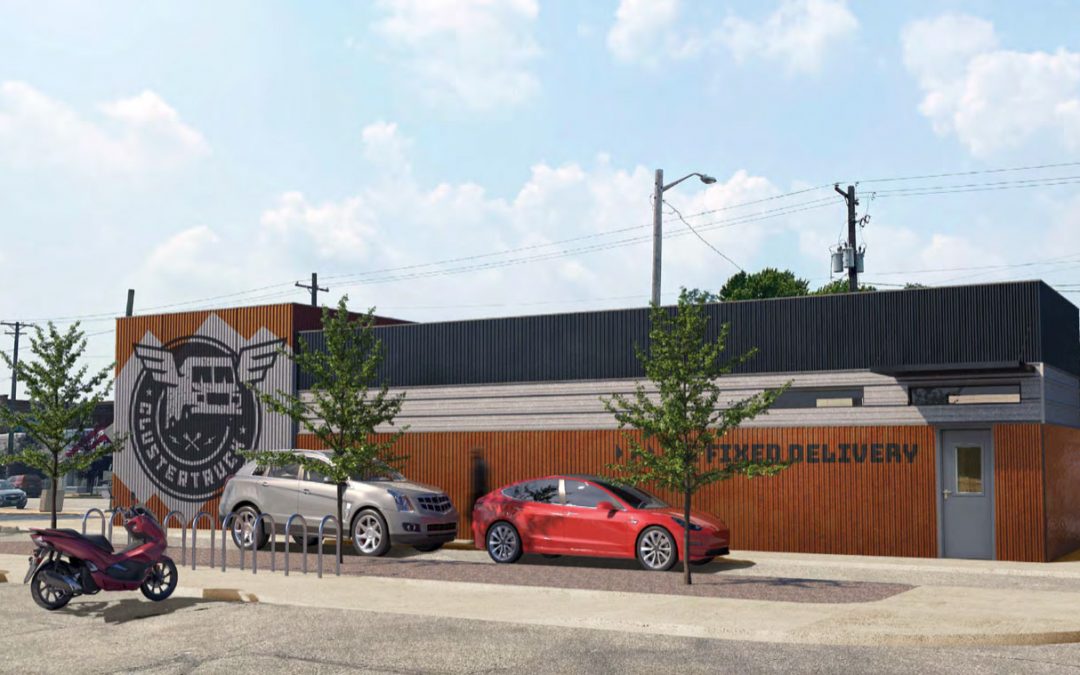Ghost kitchen operator ClusterTruck has a new model designed to help the company fill in existing markets and quickly scale new ones.
ClusterTruck has been operating since 2016, founded on the principle of vertical integration. It controls the order platform, the cooking and the drivers through a single end-to-end software platform. When the company first started scaling up, founder and CEO Chris Baggott said the toughest aspect of the business was getting brand recognition in new markets.
In Indianapolis, the company headquarters, a busy lunch hour for the home-town company worked great. When it hit new markets, things were harder. The company expanded, then mothballed a few locations where the marketing wasn’t clicking.
Today, the company has seven locations, four in the Indianapolis area, two in Ohio and one in downtown Kansas City. It also found a partner in Kroger, which serves as host for two in-grocery kitchens currently and more to come.
A smaller kitchen footprint and a market model built around it could make growth and expansion easier.
“Now, we have a modular kitchen concept, our first is about to be deployed in the next few weeks. Not a shipping container or trailer, but a purpose-built modular building,” said ClusterTruck COO Brian Howenstein. “That allows us to get a standard footprint and model and consistent process to scale.”
This might sound like Reef, the largest ghost-kitchen operator in the industry. It too is very standardized and can essentially be dropped into one of the company’s many parking facilities. For ClusterTruck, the standard model means they can appreciate the drop-in power of a smaller format, but also integrate better with that end-to-end software system.
A standardized kitchen makes it easier to plug in smart equipment like ovens programmed to make items with many steps. The company chef has figured out how to capitalize on that automation with even complex dishes across the company’s menu that ranges from Asian to Mexican and from burgers to pizza and healthy bowls, too.
“They figured out how to make pad Thai in an oven, which I never thought was possible. With those ovens we’re able to control how that moves in the oven, temperatures, timings and simulate how we’re doing that in a sauté pan,” said Howenstein. “As the order comes in, we can bring that straight to the oven.”
He said the new equipment is going to existing locations as well, which will help staff be more efficient and just handle the 1,000 daily orders and 3,000 to 4,000 menu items sold across the seven locations.
The footprint and the automation make it easier to operate multiple locations in a market. That’s important for growth, being able to cater to diners at the office, home and wherever helps turn ClusterTruck into a go-to for all manner of dining occasions.
“We want to enter a market with four or five locations instead of one. We find our customers become much more valuable and more sticky if they can order in all the places they are,” said Howenstein. “When they were just downtown, they used us for lunch, when we went to where they live, it was game over. Every time we add a kitchen it raises the whole level.”
He said the company will work to fill out existing markets with the smaller kitchens, then identify the next two or three markets it wants to tackle under the new fast-scaling method. The first push will be deeper penetration in the Indianapolis market—where the company has two Kroger locations and one standalone kitchen in development—and three in the Columbus area; both Kroger locations.


